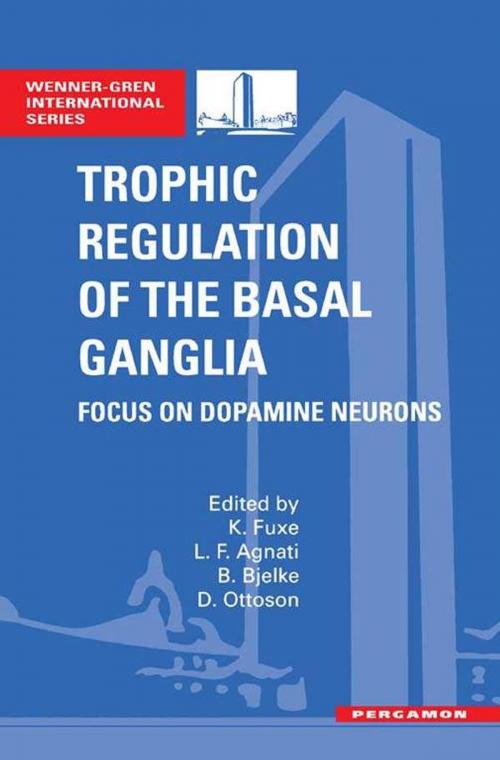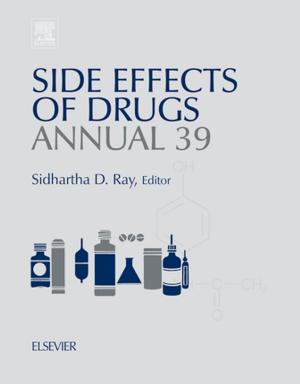Trophic Regulation of the Basal Ganglia
Focus on Dopamine Neurons
Nonfiction, Health & Well Being, Medical, Medical Science, Physiology, Science & Nature, Science, Biological Sciences, Human Physiology| Author: | ISBN: | 9781483103099 | |
| Publisher: | Elsevier Science | Publication: | October 22, 2013 |
| Imprint: | Pergamon | Language: | English |
| Author: | |
| ISBN: | 9781483103099 |
| Publisher: | Elsevier Science |
| Publication: | October 22, 2013 |
| Imprint: | Pergamon |
| Language: | English |
Trophic Regulation of the Basal Ganglia: Focus on Dopamine Neurons examines neurotransmitters.
The book first discusses the role of fibroblast growth factor-2 (FGF-2) and ganglioside GM1 and the trophic regulation of the basal ganglia. Biochemical and histochemical studies on the cellular localization of FGF-2; mapping of FGF-2 and its receptors in the basal ganglia postnatally and adulthood; and mapping of the ganglioside GM1 distribution in the basal ganglia are presented.
The text also explains glucocorticoid and estrogen effects on the nigrostriatal and mesolimbic dopaminergic systems; factors associated to dopaminergic cell death in Parkinson's disease; and compensatory mechanisms at dopamine D-2 receptors. The book also describes the effects of brain-derived neurotrophic factor on injured dopaminergic neurons; role of gangliosides and trophic factors in brain repair; and features of the trophic action of polyamines. The text also underscores the presence of interleukin-1 in the central nervous system; neuropeptides synthesis in astrocytes; and astrocytic kynurenines as modulators of dopaminergic function in the rat basal ganglia.
The selection is a good source of information for readers wanting to study neurotransmitters.
Trophic Regulation of the Basal Ganglia: Focus on Dopamine Neurons examines neurotransmitters.
The book first discusses the role of fibroblast growth factor-2 (FGF-2) and ganglioside GM1 and the trophic regulation of the basal ganglia. Biochemical and histochemical studies on the cellular localization of FGF-2; mapping of FGF-2 and its receptors in the basal ganglia postnatally and adulthood; and mapping of the ganglioside GM1 distribution in the basal ganglia are presented.
The text also explains glucocorticoid and estrogen effects on the nigrostriatal and mesolimbic dopaminergic systems; factors associated to dopaminergic cell death in Parkinson's disease; and compensatory mechanisms at dopamine D-2 receptors. The book also describes the effects of brain-derived neurotrophic factor on injured dopaminergic neurons; role of gangliosides and trophic factors in brain repair; and features of the trophic action of polyamines. The text also underscores the presence of interleukin-1 in the central nervous system; neuropeptides synthesis in astrocytes; and astrocytic kynurenines as modulators of dopaminergic function in the rat basal ganglia.
The selection is a good source of information for readers wanting to study neurotransmitters.















